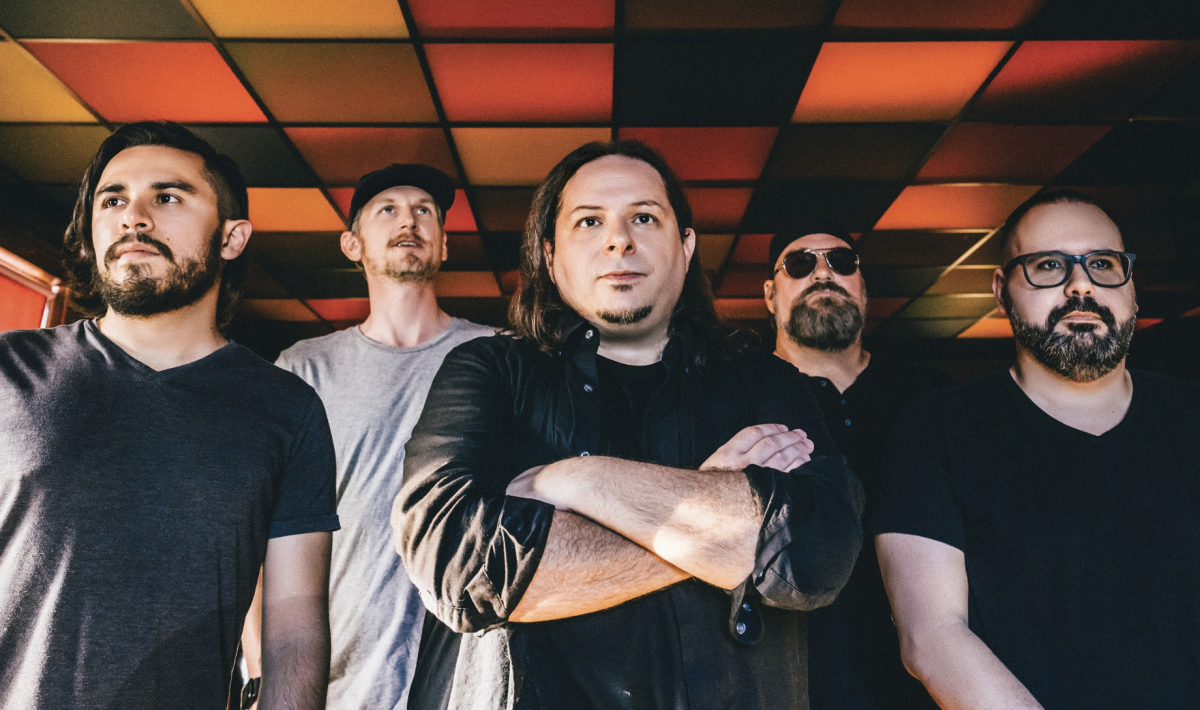The Power of BIPOC PoP is a symposium put on to bring many different creatives and intellectuals in different spaces that represent BIPOC (Black, Indigenous, and people of color) working in multimedia arts. This event has taken place for three years, and it’s hosted at the University of Texas at Austin. The event aims to strengthen the community by bringing these creatives together to share their knowledge and experiences with those who attend and encourage BIPOC.
Dr. Teresa Rojas
Alexandra Valencia-Serrano | Finance Editor
Dr. Teresa Rojas is a professor of Ethnic Studies and English at Modesto Junior College in Modesto, California. She’s also the director of the annual Latinx Comic Arts Festival that takes place in Modesto, California. As a comic artist and writer of color, she attended BIPOC Pop at the invitation of her previous mentor, Frederick Luis Aldama, better known as Professor Latin X, to expose herself and her work, make connections with other BIPOC artists, and talk at a panel about teaching comics in the classroom.
At the Modesto Junior College, Rojas is part of the Rising Scholars Network program that provides educational opportunities for formerly incarcerated individuals. Besides teaching creative writing, Rojas also encourages student storytelling through different forms of media such as poetry. With comics as her specialty, she specifically teaches students how to tell their stories through comic form.
“What I love about teaching comics is being able to look at these different things and talk,” Rojas said. “I do this little demonstration where we talk about font choices, like when I write ‘horror’ on the board, just in my normal handwriting, and then I take a red pen, and I write ‘horror’ it looks like blood is dripping and it’s like, what is the difference? And we have a whole discussion for like 10 minutes. But in comics, that’s what we do is we make those really important choices on every page.”
Rojas explained that telling stories through comics allows an individual to challenge and offer perspective to the assumptions people make about their personal story. Every decision in the creation of a comic, from the title font to the comic style, is made to invoke a specific emotion. To successfully convey a message through the small details is the power of comics that Rojas tries to communicate and emphasize to her students.
After BIPOC Pop, Rojas is looking forward to further developing her anthology project, a collection of stories about illness, trauma, and healing. These will be stories that people never talk about, or as Rojas likes to say, are a little scandalous.
“Telling the kind of stories where your family’s like, ‘we don’t talk about that,’ are the kinds of stories we want to see,” Rojas said. “And chisme (gossip), I will say. If it’s chisme, I want to see it. I want to hear it. I want to know all about it, as a chismosa from way back.”
Veronique Medrano
Victor Martinez | Sports Editor
Kamryn Reyes | Staffer
Veronique Medrano is a Tex-Mex comic book writer and singer-songwriter currently releasing her work through Chispa Comics. Through her writing, Medrano highlights the often-overlooked beauty and true colors of Mexican-American culture to counteract the stereotypes and depictions of it that are pervasive in American media.
“There is this very clear yellow-brownish-ification of an area that completely removes the color and the vibrancy of where you’re from,” Medrano said. “Like that yellow-brownish filter [put on scenes set in Mexico] that looks dingy. That feeling is so ingrained in me. I don’t like it. And so when we’re talking about my works, I tried to go completely away from that and show the vibrant colors that come from these semi-warm, hot, tropical areas.”
By articulating her culture as genuinely as possible, Medrano hopes to pioneer the way for Mexican-American stories to come and, subsequently, build a legacy that is synonymous with her work’s authenticity, the soon-to-be stories she hopes to inspire, and her fresh voice and storytelling.
“Maybe you’ve picked up a book and you see something and you’re like, ‘This feels very Veronique coded,’ and then you look at the cover, you’re like, ‘Ah, there she is,’ then I’ve done my job,” Medrano said.
In “Dragonthrall”, her most recent work released in March, she utilizes this philosophy to express a sense of cultural importance for Mexican-Americans by including subtle nods and references to Mexican traditions such as La Mordida or Nochebuena meant to identify with audiences in the same way white audiences can identify with their culture and traditions in mainstream American media. Instead, Medrano voices her experience living as a Latina to fill the comic’s cultural framework with a story based on her own life and struggles to bring a realness to its fictional world and raw reliability to its characters.
“There’s definitely a focus on feminine rage, and how, in that story alone, they gave me a character, she was female, but they didn’t tell me I had to go this route,” Medrano said. “I did because I remember, in my teens, dealing with this sense of rage against what I was now coming up against as a growing adult and realizing that a lot of the Disneyfication and the fantasy-ification of how life would be as an adult was not so much there, reckoning with that, and so expressing feminine rage in such a beautiful, colorful way, to me, is honestly a great feat in my opinion.”
Having been a singer-songwriter for 10 years and a career artist since 18, Medrano has had her resolve and heart constantly tested and swayed by the volatile and sometimes brutal music and art industries. Despite having already released three albums by 2020, the COVID-19 pandemic, outside voices and critics of her work, and being hospitalized and close to death put her to the test. It was in this dark and uncertain period, however, that Medrano realized she was meant to create.
“All I wanted to do was put out something and that creative bit of me to exist,” Medrano said. “There was no other way to explain it, and it’s even hard to contextualize now in an interview because when you are close to dying, you will see what is most important to you, and what was the most important to me, in my moments of solitude and silence and grief, was my art… That’s when I knew, ‘Okay, I’m good. I am me, and there’s nobody who could change that voice because of that solitude, in that silence, in that dark place that I could still find light in my art.’”
“Dragonthrall” was released in March through Chispa Comics. Medrano’s next comic, “The Black Demon Descent”, has already been finished and is scheduled for a June release. She plans to release two more projects in 2025 and continue releasing music.
Omar Banuchi
Sarah Garrett | News Editor
LiLi Xiong | Managing Editor
Omar Banuchi is a digital artist and illustrator. Along with Rosaura Rodríguez, he runs the Días Cómic Collective, a publishing house based in Puerto Rico. Días Cómic has published six books so far, on top of selling T-shirts and stickers.
“Every book of ours touches on Puerto Rico,” Banuchi said. “We, through our art, ask for the liberation of Puerto Rico. We don’t like the colonial status quo and we would like for us to be an independent country. And that is present in all of our books, whether directly or through symbolism.”
Some of these books include “Otra Duelo”, a collection of 10 poems about grief illustrated with vintage newspapers, and “Temporada”, a memoir about Rodríguez’s experiences with Hurricane Maria. The stickers, ranging from skeletons flying on airplanes to cats, highlight Puerto Rican culture and experiences as well.
“Most of the stickers deal with a certain kind of darkness, or freedom too,” Banuchi said. “Cats are very important in our mythology, both because they are cute but also because they are a threat. They are dangerous animals. So even the stickers have a little bit of a storyline going on.”
According to Banuchi, Días Cómic was apprehensive about presenting their work in white-dominated fields, not because of the books’ messages, but because of the language barrier. Since the collective publishes in Spanish, Banuchi was excited that the books sold well regardless.
“Avoid those intrusive thoughts that say ‘I cannot do that thing, that it’s hard, that no one will care’,” Banuchi said. “People do care. Some people were really pumped, even people that spoke English as a main language … I think the most important thing is just to keep on working, and to keep on building.”
Ayden Castellanos
Megan Gerold & Katie Busby | Entertainment Editors
Ayden Castellanos crafts a podcast soaked in history that shares the deep tradition of narrative history and otherworldly stories of the Rio Grande Valley where he is from as well as gathering other perspectives and stories from his guests. Castellanos’s podcast, Susto, which translates to “scares”, shares the scary/spooky stories from his community and childhood. He created the show to fill a gap in the media and has been doing it for around five years now.
“When I started listening to podcasts, I wanted to hear a podcast about the stories I’ve heard growing up, and I had a very clear idea of what I wanted it to sound like and what I wanted the format to be, and I couldn’t find anything that fit exactly what that vision was, so I decided I was just going to do it myself,” Castellanos said.
When talking about events like these, Castellanos said that his presentations are almost like a live episode and getting to reach even more people and hear their stories is such a positive experience for him. People attending events like this and seeing these types of media he says is also so important because it shows them that there is a demand for what they create. They should push into these spaces even if it is hard because they can inspire people who may be looking for the type of content they want to make.
“I think it’s really important to showcase that our voices do exist, that they’re here and to uplift them in any way possible,” Castellanos said. “I think it’s also a great example, especially for students to see that, you know, there is a future and this kind of content or this kind of industry for BIPOC students. There are options and there’s an audience for it.”
Castellanos urges any BIPOC creators to just get started, stating that doubt and perfectionism will be the biggest setback and that there are already enough barriers for BIPOC creators they should not be creating their own as well. He believes there’s space for all the content and that diverse perspectives will be valued by people. His podcast can be found anywhere you listen under the name Sustos or on the website sustopodcast.com.







